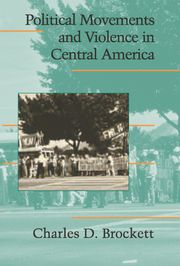1 - INTRODUCTION
Published online by Cambridge University Press: 23 November 2009
Summary
Progressive activists grew more assertive in Central America during the 1960s, mobilizing groups around their shared grievances and struggling through collective action to create a better life for themselves and others. Normally initiated by students, teachers, and other professional groups, these efforts were joined by urban labor organizations, which by the 1970s were frequently in the forefront of the broader social movements that had emerged. Organizing in the countryside invariably has faced greater constraints in Central America but here too peasant movements grew and on notable occasions played important roles in furthering the demands of popular (i.e., non-elite) movements.
Across the region these movements faced great odds, from the intransigence of economic elites to harassment and intimidation by both public and private security forces. They also were attacked violently by agents of the state. As nonviolent mass movements grew in size and contentiousness – often paralleled by the rise of armed groups fighting for their revolutionary cause – states became more repressive, less so in Costa Rica and Honduras, much more so in Nicaragua, and horrifically so in El Salvador and Guatemala. Yet, even in the face of virulent state terrorism, some committed and courageous activists continued on and, whenever repression slackened, popular movements reappeared.
This confrontation between committed popular movements and state violence is most striking in the cases of El Salvador and Guatemala, which are the primary focus of this study.
- Type
- Chapter
- Information
- Political Movements and Violence in Central America , pp. 1 - 34Publisher: Cambridge University PressPrint publication year: 2005

